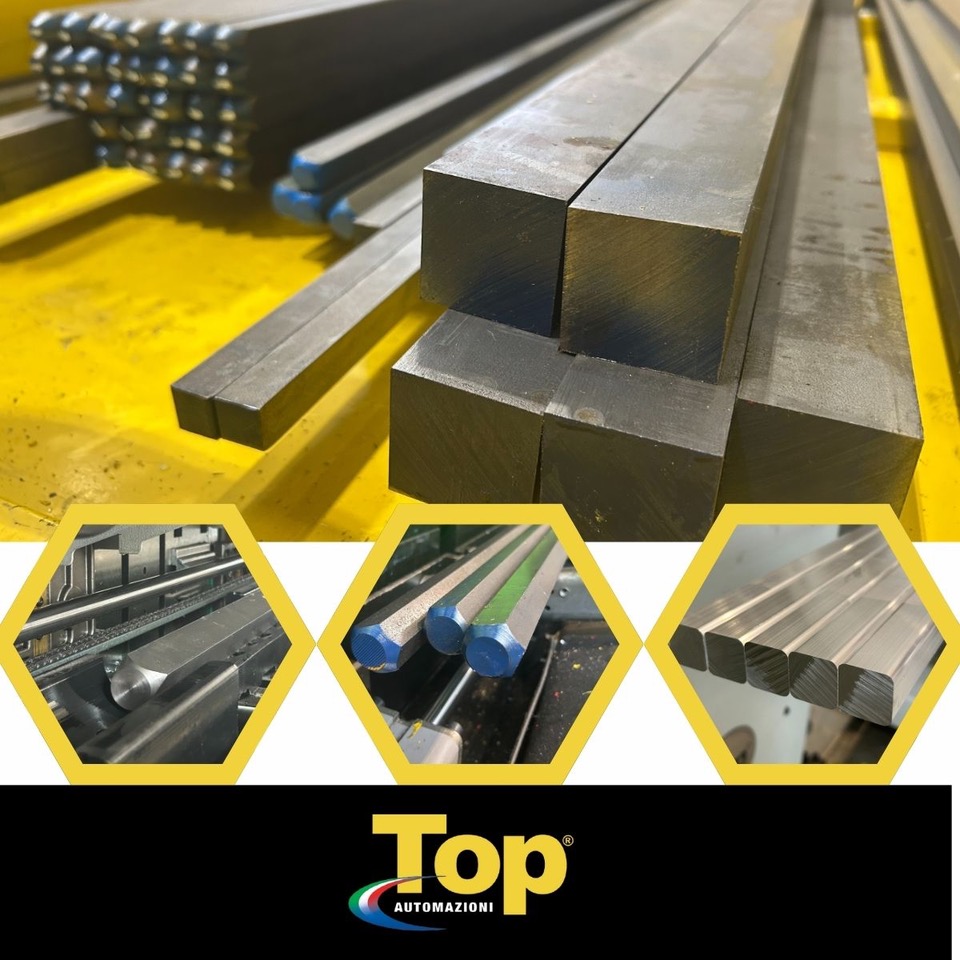Optimizing the Machining of Hexagonal and Square Bars
At Top Automazioni, our bar feeders are engineered to handle a wide range of bar shapes: round, hexagonal, and square. While round bars are the industry standard and widely used, hexagonal and square bars can offer unique advantages, provided they are managed correctly. To help you achieve optimal performance with these non-cylindrical profiles, here’s a technical refresher highlighting best practices and setup recommendations.
- Bar Preparation
- Bevel both ends of the bar. It’s essential to create a more pronounced bevel on the loader side compared to the lathe side. This is crucial:
- On the loader side, to facilitate insertion into the collet.
- On the lathe side, to allow smooth passage within the spindle gripper.
- PLC Parameter Configuration
- Select the correct bar shape in the settings panel
- Set the appropriate diameter:
• For hex/square bars, always use the wrench size (B), not the maximum external diameter (C), as illustrated
- Mechanical Setup of the Bar Loader
- For extended operations with hexagonal or square bars:
• Replace the first steady block with a dedicated half-round version specifically designed for these sections.
- Feeding Phase
- During bar insertion:
• Lower the spindle rotation speed to approximately 80 RPM, or implement an oscillation mode. Conduct insertion tests to ensure proper alignment between the bar section and lathe collet.







